Arabic Personal Pronouns With Examples (Essential Guide)
Arabic personal pronouns are the pronouns that are used to refer to people in the Arabic language. They are an important part of the grammar of the language and are used to indicate the person, gender, and number of the person.
Advertisements
Arabic Personal Pronouns
Arabic personal pronouns are a type of pronoun that indicate who or what is performing the action of a verb. Thus, with three numbers, two genders, and three persons, there are a total of twelve grammatical persons, each of which has at least one Arabic personal pronoun.
How Many Personal Pronouns Are There In Arabic?
There are 12 personal pronouns in Arabic. We have three numbers, two genders, and three persons, that is a a total of twelve grammatical Personal persons.
The twelve personal pronouns in Arabic are:
- I أنا (ana)
- you (masc.) انتَ (anta)
- you (fem.) انتِ (anti)
- he هو (howwa)
- she هي (heyya)
- we نحن (naHnu)
- you أنتما (antuma)
- they هما (humaa)
- you (masc.) أنتم (antum)
- you (fem.) أنتن (antunna)
- they (masc.) هم (homa)
- they (fem.) هن (hunna)
Here is the list of all the personal pronouns in Arabic:
Advertisements
| Arabic Personal Pronouns | Transliteration | English |
| أنا | ana | I |
| انتَ | anta | you (masc.) |
| انتِ | anti | you (fem.) |
| هو | howwa | he |
| هي | heyya | she |
| Dual | ||
| نحن | naHnu | we (two persons) |
| أنتما | antuma | you (two persons) |
| هما | humaa | they (two people) |
| Plural | ||
| نحن | naHnu | we |
| أنتم | antum | you (masc.) |
| أنتن | antunna | you (fem.) |
| هم | homa | they (masc.) |
| هن | hunna | they (fem.) |
In Arabic, the personal pronoun is more specific than in many other languages; for example, there are different ways to say “you” in Arabic depending on who you’re addressing it to.
RELATED READINGS; Object Pronouns In Arabic With Examples
For example, to address two people, use a different personal pronoun than you would for a single person; also, if you’re addressing more than two people, use a different form. Finally, the majority of subject pronouns have both feminine and male forms.
Generally, Arabic personal pronouns can be classified according to:
Conversation – الْكَلامُ:
Advertisements
- Third-person – الْغَائِبُ
- Second person – الْمُخَاطَبُ
- First-person – الْمُتَكَلِّمُ
Gender -الْجِنْسُ:
- Masculine – المُذَكَّرُ
- Feminine – الْمُؤَنَّفُ
Number – الْعَدَدُ
- Singular – الْمُفْرَدُ
- Dual – المُثَنَّى
- Plural – الْجَمْعُ

Types Of Personal Pronouns In Arabic
In Arabic, there are three different types of personal pronouns: the first person, the second person, and the third person.
Advertisements
Each of these pronoun types has a different set of forms, depending on whether they are used to refer to one person (singular), two people (dual), or more than two people (plural).
First Person
The first person pronouns in Arabic are:
- I أنا (ana)
- we نحن (naHnu)
These pronouns are used to refer to the person or people who are speaking. They are used to refer to the speaker and can be used in both the singular (أنا) and the dual or plural form (نحن). For example,
- I am a student ….. أَنَا طَالِبٌ
- We are students ….. نَحْنُ طُلاَّبٌ
Second Person
The second-person pronouns in Arabic include:
- you (masc.) انتَ (anta)
- you (fem.) انتِ (anti)
- you (dual) أنتما (antuma)
- you (masc.) أنتم (antum)
- you (fem.) أنتن (antunna)
These pronouns are used to refer to the person or people who are being spoken to. For example,
- You are a man ….. أَنْتَ رَجُلٌ
- You are a doctor (f) ….. أَنْتِ طَبِيبَةٌ
- You are students (dual fem & mas) … أنتما طالبان
- You are men ….. أَنْتُمْ رِجَالٌ
- You are female doctors ….. أنتن طَبِيبَاتٌ
Third Person
The third-person pronouns in Arabic include:
- he هو (howwa)
- she هي (heyya)
- they (dual) هما (humaa)
- they (masc.) هم (homa)
- they (fem.) هن (hunna)
These pronouns are used to refer to the person or people who are being spoken about, but who are not present in the conversation. For example,
- He is a doctor ….. هُوَ طَبِيبٌ
- She is a woman ….. هِيَ إِمْرَأَةٌ
- They are students (dual fem or mas) …. هما طالبان
- They are male doctors ….. هُمْ اَطِبَّاءُ
- They are female doctors ….. هُنَّ طَبِيبَاتٌ
Conclusion
Overall, Arabic personal pronouns are an important part of the language, and they are used to add clarity and precision to conversations and written texts.
By understanding the different forms and uses of these pronouns, learners of Arabic can improve their ability to communicate effectively in this beautiful and complex language.
Advertisements

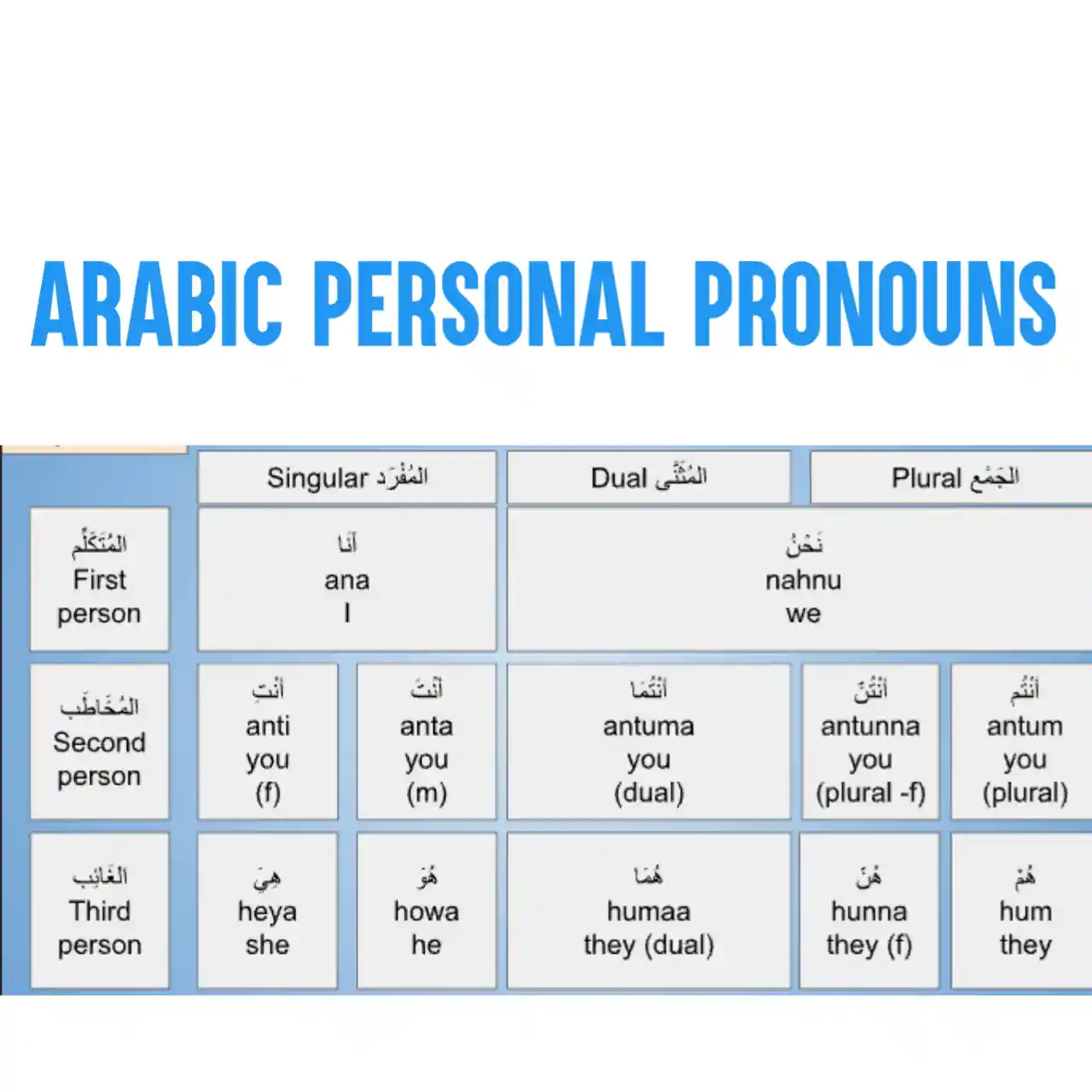
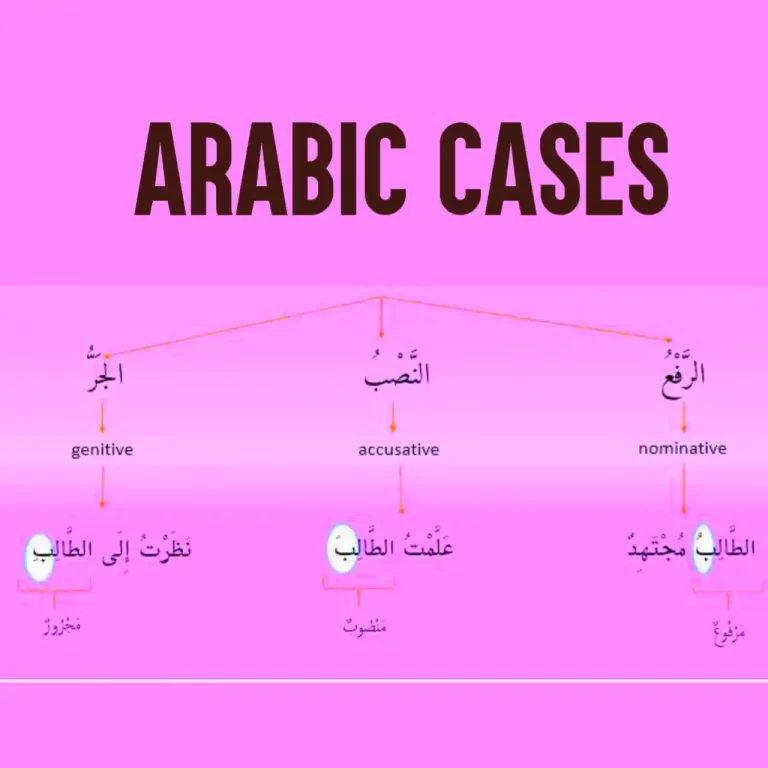
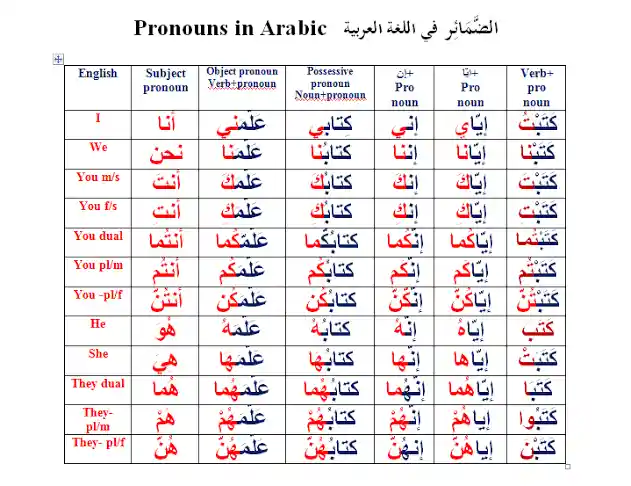
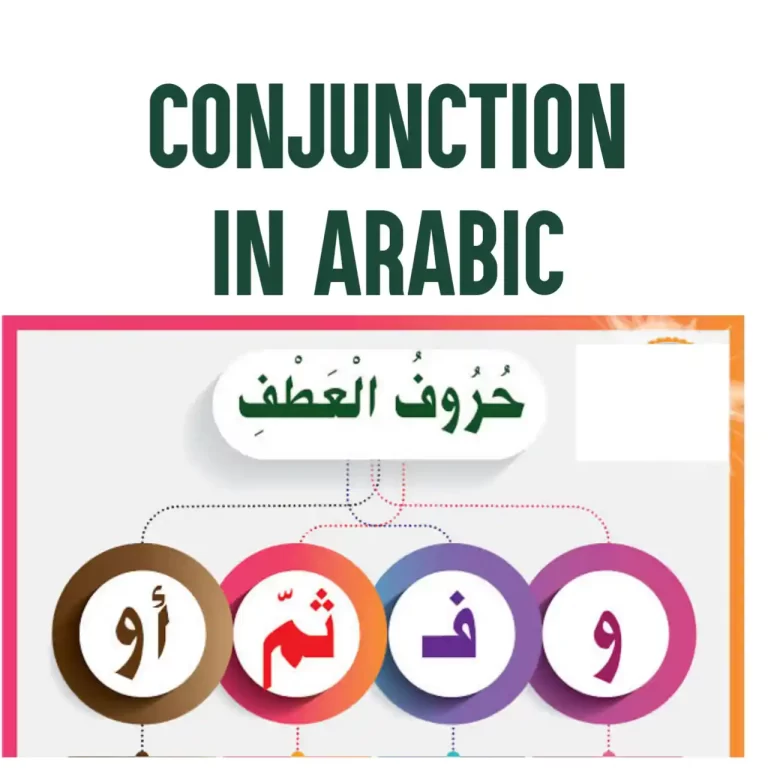

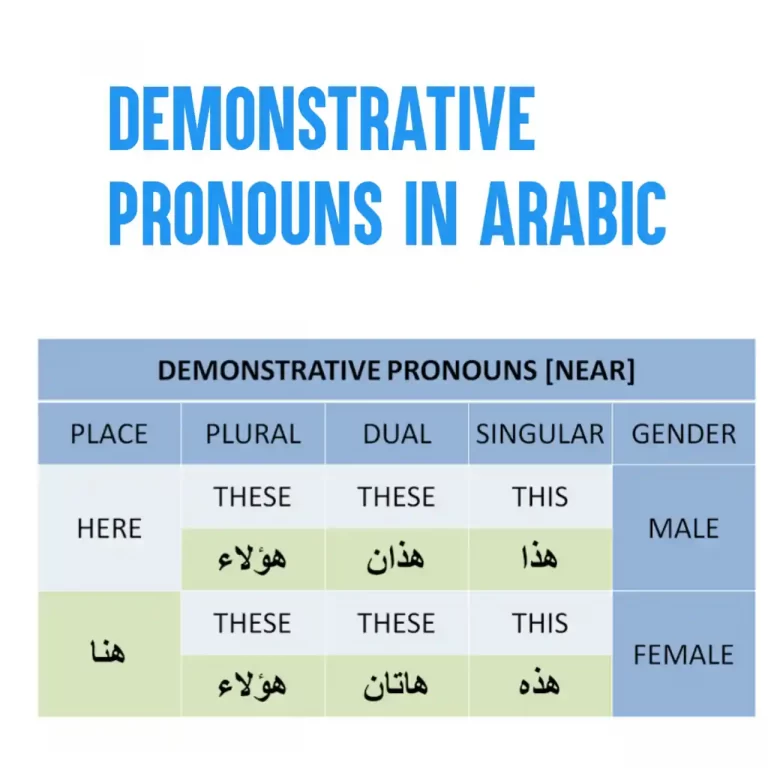
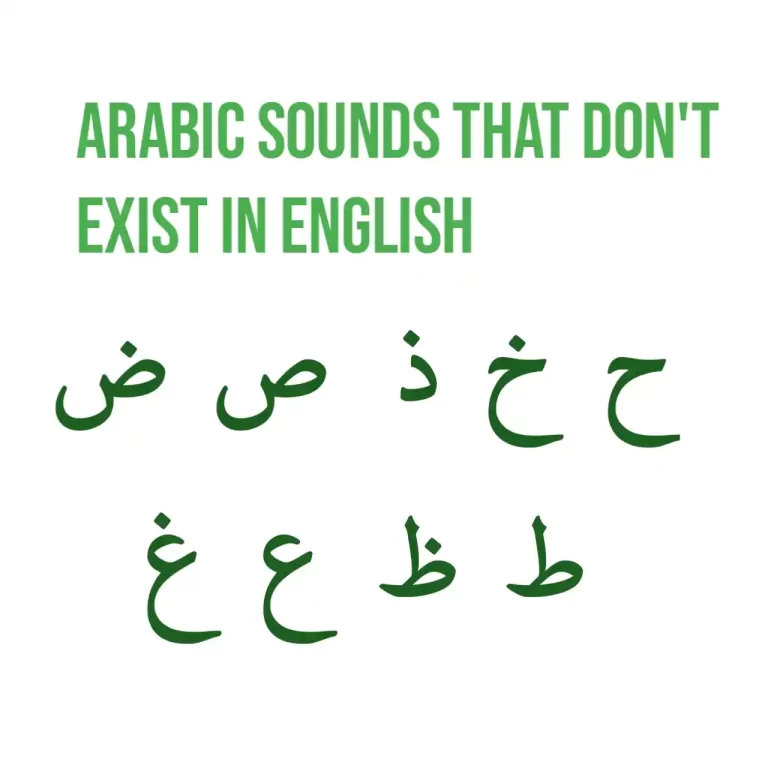
One Comment